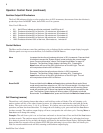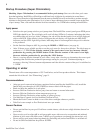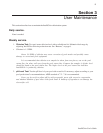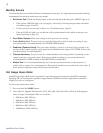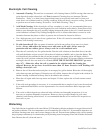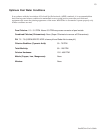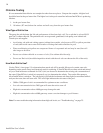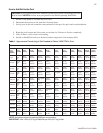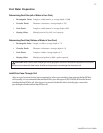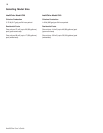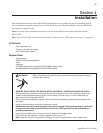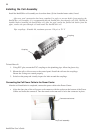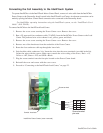14
IntelliChlor User’s Guide
Chlorine Testing
It is recommended that chlorine test samples be taken from two places. Compare the samples. A higher level
should be found at the pool return line. The higher level at the pool return line indicates IntelliChlor is producing
chlorine.
1. At the pool return line.
2. 18 inches (457 mm) below the surface and well away from the pool return line.
What Type of Salt to Use
The purer the salt the better the life and performance of the electrolytic cell. Use a salt that is at least 99.8%
pure NaCl, sodium chloride. The preferred salt is an evaporated, granulated, food quality, non-iodized salt.
Consult your salt supplier.
• Avoid using salt with anti-caking agents (sodium ferrocyanide, also known as YPS or yellow prussiate
of soda) that could cause some discoloration of fittings and surface finishes in pool.
• Water conditioning salt pellets are compressed forms of evaporated salt and may be used, but will
take longer to dissolve.
• Do not use calcium chloride as a source of salt. (Use sodium chloride only).
• Do not use Rock salt (insoluble impurities mixed with the rock salt can shorten the life of the unit).
How Much Salt to Use?
Use the Table 1 chart (page 15) to determine how much salt will be needed. Most pools contain some salt,
depending on the water source and chemicals used for sanitizing. If IntelliChlor has not been wired and turned
on yet, a hand held meter calibrated for NaCl (salt) can be used to determine the existing salt concentration of
the water. If IntelliChlor is wired in (connected), use it to determine the salinity. Turn on the filter pump to
allow IntelliChlor to switch on. The salt display will flash the last known salt status light for one minute while it
analyzes the water, then will turn solid. This solid light indicates the salt status of the pool.
• 3000 to 3500 ppm of salt is recommended for optimum water conditions.
• Low salt concentration below 2400 ppm will cause the unit to turn off
• High salt concentration above 4000 ppm may damage the unit
• High salt concentration above 6000 ppm may cause corrosion damage to pool fixtures.
Note: For more troubleshooting information about high salt levels, see “Troubleshooting,” on page 25.



